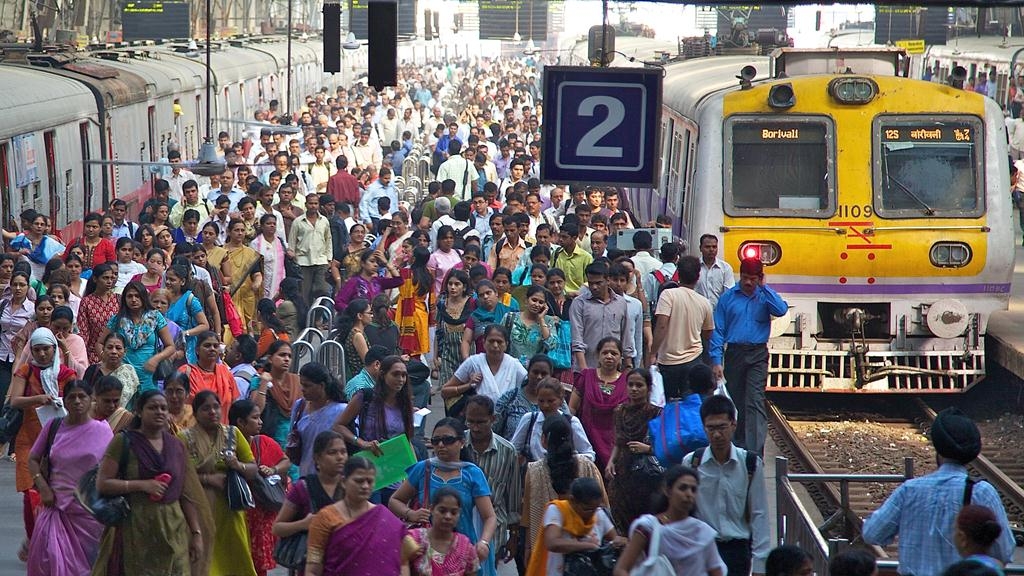International experience helps brainstorm on building 100 ‘smart cities’
Not since the industrial revolution has the world stood at such a turning point. The headlong rush towards urbanization together with skyrocketing technological advances is reshaping much of the world.
How then can India, soon to be the most populous nation on earth, use these defining transformations of the 21st century to reimagine the future?
The question is urgent. For, within the next few decades 750 million of India’s people will live in urban areas - and its massive young cohorts are impatient for jobs and a better quality of life.
Moreover, how these denizens use the planet’s resources will not only impact future generations of Indians but the rest of the world as well.
The challenge is gargantuan – and India’s new government has taken it on by pledging to create 100 new ‘smart cities’ and refurbishing 500 old ones.
What is a smart city?
But, what exactly does a ‘smart city’ mean? To help think this through, the World Bank Group recently held a one day international knowledge exchange on the subject in New Delhi.
Kicking off the seminar, the World Bank’s Maninder Gill, director for the urban, rural and social development global practice, sounded the warning, “If India’s cities grow the way most of the world has over the past 100 years, they will burst at the seams and devour the planet’s resources.”
How, then, can a smart city use the latest in technology to create jobs, provide energy-efficient housing, high frequency mass transportation, 24/7 water and power supply, and seamless internet connectivity so that millions can live, work, and play with maximum productivity and a minimum impact on the environment?
Inaugurating the seminar, Shankar Agarwal, Secretary, Ministry of Urban Development explained that the economic opportunities of today are mainly to be found in urban areas. And, here, technology can be a game changer.
But, a smart city is more than an IT solution, clarified Greg Clark, member of the UK government’s Smart Cities Forum, in the keynote address. Instead, he said, it is a “system of systems” that requires the alignment of good leadership, governance, investment, and institutions. And, this takes time to achieve.
“Using technology must not be misunderstood to be elitist,” added Jose Luis Irigoyen, director in the World Bank’s transport and ICT global practice. “Rather, technology is a great leveler as it empowers all citizens and should be used to serve the poor.”
Which cities should India choose?
Next, the key questions before India are: how is the country to choose which cities to develop and what should be done to make them smart, said Dinesh Sharma, Additional Secretary in the Department of Economic Affairs, Ministry of Finance.
“It is important to identify cities where the hinterland has enormous potential for productivity,” said Martin Rama, the World Bank’s chief economist for the region.
While old cities may be too difficult to fix, new satellite towns can leapfrog traditional patterns of growth, added Onno Ruhl, the World Bank’s India country director. “Imagine if Patna had a Gurgaon? Or if Kanpur had a NOIDA?” he asked rhetorically.
In this, South Korea has much experience to offer. Dongtan, for instance, was built from scratch in 6 years, with schools, hospitals, subways, housing – the works. An hour away from Seoul and with easy connectivity, the city has since recovered all the costs incurred in its development. “We went through much trial and error,” recalled Dr. Jae Yong Lee from the Korea Research Institute for Human Settlements. “Others can now learn from us and arrive at their own unique way.”
What needs to be done?
How then can cities be made smarter? What about traffic – that bane of modern urban living? The focus needs to shift from moving vehicles to moving people, advised Professor Kenneth Gwilliam of Leeds University. In Curitiba, Brazil, for instance, car use has gone down despite high car ownership thanks to the high-frequency public transport system that enables buses to move seamlessly.
And then there is solid waste. While India has recently launched a ‘Clean India Campaign’, mountains of garbage still litter India’s cities, and landfill sites are hard to find. “Not in my backyard!” is the common refrain. Again, Korea has shown how waste can be turned into a resource; and Stockholm is even buying waste to convert into energy.
Finally good governance - perhaps the most difficult issue of all. Not much can be done unless the multiplicity of India’s urban authorities is pared down, institutions are aligned with new ways of thinking, and powers, people, and funds are devolved. “What can a dynamic mayor do if he doesn’t have the powers?” said Gill.
Lastly, speedy implementation is key, for once a pattern of growth is locked in, it becomes almost impossible to change. Clearly, there is little time to lose. “India can’t afford to wait for ten years for reforms,” said the World Bank’s Ming Zhang, manager in the urban global practice. “Being accountable to the citizens can help speed things up.”

